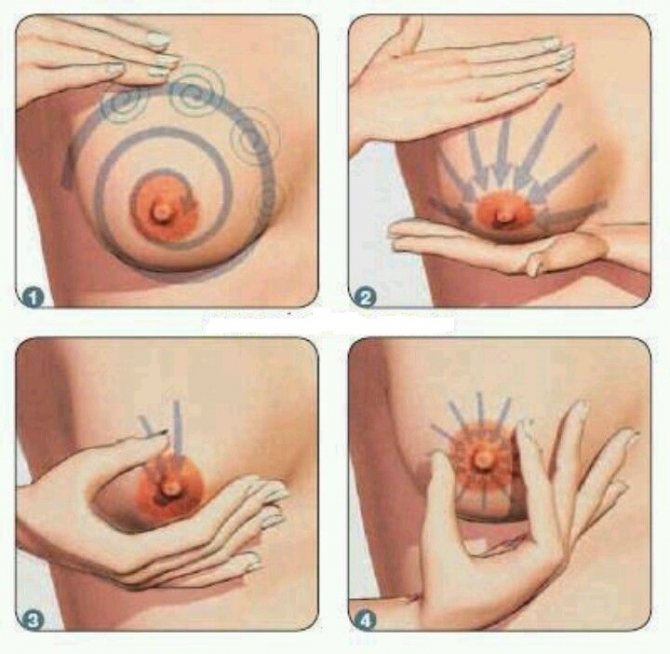The nuances of breastfeeding after caesarean section
The amount of milk a woman has directly depends on how often the baby is put to the breast and how early the first feeding occurred. According to the World Health Organization, sufficient sucking activity in a newborn should develop within 6 hours after birth. It is important to consider this time interval for successful feeding. During a caesarean section, the first application is optimal an hour after the operation: a baby who has not passed through the natural birth canal requires more time to adapt and activate sucking urges. To produce milk, regardless of how actively the baby sucks, it is applied according to each requirement until the reflex reaches the desired intensity.
During a caesarean section, there are additional factors that influence the baby’s first attachment to the breast:
- Type of anesthesia used. With epidural anesthesia, the woman in labor remains conscious; drugs are injected into the cerebrospinal fluid and relieve sensitivity only from the lower part of the body. After the baby is removed, it is immediately placed on the mother’s chest, this allows you to achieve the same result as during a natural birth. With general anesthesia, more time passes before the first application - you need to wait until the mother comes out of anesthesia.
- Special positions for feeding. Considering the presence of a postoperative suture and drainages, you need to feed in positions that exclude pressure on the stomach - from under the arm, on the side.
- Staying in the same room. It is necessary that the child be with the mother as soon as she is strong enough - then she will be able to put him to her breast often. If a woman in labor is in intensive care, then early first feeding is impossible. In this case, it is important to organize it as soon as possible, refuse supplementary feeding with formula from a bottle and ensure regular breast expression to stimulate the arrival of milk.
- Taking antibiotic drugs. If complications arise during the operation, the woman in labor may be prescribed antibiotics to prevent breastfeeding. In this case, it is important to follow two rules: regular pumping and feeding the baby with formula from a spoon, and not from a bottle. The first application occurs after the drug has completely left the woman’s body.
Photo gallery: acceptable positions for breastfeeding after cesarean section
The under-arm position requires placing a pillow under the baby when feeding to avoid tension in the abdomen after a caesarean section.

Putting the baby to the breast in a side-lying position is comfortable for the mother after surgery

The over-the-shoulder feeding position allows you to completely eliminate the baby's impact on the stomach
How to breastfeed your baby correctly
It is quite important to understand how a baby should latch on to the breast. The saturation of the baby, as well as the health of the mother's breast, depends on the correct latching of the nipple. After all, if the nipple is grasped incorrectly, the nipple will be injured and cracks may occur - this will undoubtedly harm the lactation process. The baby should clasp the nipple and areola wide with his lips, with the nose and cheeks touching the breast, and the lips should be turned outward. If everything is done correctly, the baby will suck and swallow rhythmically and get a sufficient amount of milk. If it is clear from unpleasant sensations that the baby has latched onto the breast incorrectly, then you need to gently open the mouth with your finger and correct the position. Such feeding of a newborn, stimulating lactation, will affect intensive milk production.
The most important task for mothers who have had a surgical birth is to understand and learn that obstetric surgery and lactation after cesarean are absolutely compatible things. Do not be afraid to establish breastfeeding, because this is very important for the baby. And if you follow all the recommendations, the advice of doctors and the patience of the nursing mother, very soon the child will receive not only complete, irreplaceable nutrition, but also close emotional and tactile contact with the mother, which is possible only with such special communication as breastfeeding.
Causes of lack of milk after surgery
Lack of breast milk, as evidenced by the baby’s crying after feeding, refusal to sleep and rare urination, occurs for various reasons:
- complications after surgery, infectious disease of a young mother;
- poor nutrition, impaired drinking regime - often the reason for a small amount of milk is a lack of fluids and nutrients in the woman’s diet;
- taking prescribed medications - after a caesarean section you cannot do without medications, they are necessary to prevent complications and speedy recovery of the woman in labor;
- psychological trauma resulting from a caesarean section;
- decreased lactation due to the fact that the mother did not pump while being apart from the baby;
- refusal of frequent feeding due to pain in the suture area.
In establishing lactation, not only correct behavior after surgery plays an important role, but also the tactics chosen by the doctor. The optimal solution is a planned caesarean section after the onset of contractions - in this case, the woman’s body produces hormones responsible for contractions, and the flow of milk is significantly accelerated. If the date is set in advance and the operation is not preceded by the natural onset of labor, the process may be delayed.
Video: obstetrician about breastfeeding after cesarean section
Stimulating lactation
If after the operation you are not able to be with your baby right away, you will still have enough milk. To do this, you need not only to express milk, but also to stimulate your nipples from time to time. Stroke them, massage them a little, pinch them. By doing this regularly, the milk will definitely come.
Mother's nutrition after surgery What complications can there be after cesarean section Problems in a child at 1 month
comments powered by HyperCommentsBack to list of publications

Today, a nursing mother who wants to find help receives a lot of contradictory advice, which, alas, is not always correct. Many people undertake to advise something, having no experience themselves, or having negative experience with breastfeeding, or spreading outdated information and prejudices. Even those mothers who have fed their babies successfully for a long time cannot always offer something that really works to another mother, because each situation has its own characteristics.
Unfortunately, there are no traditions of natural breastfeeding today. Young mothers are mainly influenced by their older relatives, the vast majority of whom had negative experiences with breastfeeding. Therefore, many mothers, having not yet given birth to their first child, are convinced that breastfeeding is something difficult, unpleasant, painful and even indecent.
Fortunately, another part of society is now actively forming - highly educated mothers who value their children and use every opportunity to give them love and health.
Methods for stimulating lactation in the postoperative period
When the first breastfeeding is successful and the baby has already learned to actively suck, it is important for the mother to stimulate lactation so that the baby has enough milk. This requires proper diet and breast care.
Nutrition correction
Helping a nursing mother increase her milk supply:
- hot broths and soups from lean meat and fish - they must be added to the daily diet;
- buckwheat and oatmeal porridge with water or milk;
- fresh vegetables and fruits (carrots, radishes, pumpkin, onions, figs, prunes, apples, etc.), as well as juices from them;
- fermented milk drinks;
- rosehip decoction, hot tea with sugar;
- greens (as an addition to dishes): cumin, dill, anise, lettuce.
Photo gallery: foods that help milk production

Oatmeal and buckwheat contain complex carbohydrates

Vegetables will enrich the body with vitamins and minerals

Fermented milk products are rich in calcium and will ensure good digestion

Rosehip decoction has a lactogenic effect

Light soups and broths stimulate lactation
Effective breastfeeding requires an additional 500 kcal per day. You need to get them from low-fat protein products (meat, cottage cheese, cheese, kefir, etc.), vegetables and fruits, and not from baked goods and sweets.
It is important to remember about foods that interfere with abundant milk production - you should completely avoid them. Prohibited foods include canned food, smoked foods, spicy foods and spices, parsley, mint and sage.
Breast massage
Gentle massage of the glands before the next feeding or expressing into a bottle will help improve the production and flow of milk from the breast. It should be done gently and carefully, for 5-10 minutes twice a day.
- Moving from above, make circular movements with your fingers with moderate pressure. Fix in one zone for a few seconds, then move lower to the nipple. It is important to carefully work out each zone.
- Stroke the breast from top to bottom, towards the nipple.
- Leaning forward a little, gently shake your chest.
- Hold the nipple between your thumb and index finger and stimulate it with light movements.
After the massage, a warm shower with a stream of water directed at each of the mammary glands in turn is useful.

Massaging your breasts before feeding will ease drainage and improve milk production.
Massage should not be tiring or unpleasant.
What should you discuss with your doctor?
Many women after natural childbirth do not want to breastfeed. Some explain their desire by the fear of losing their curvy figure, while others simply do not have time for it. It is also worth remembering about those ladies who are forced to go to work almost immediately after the birth of their baby.
Things are completely different if a woman is facing an “artificial” birth. A caesarean section is not a reason to give up lactation. If the expectant mother wants to feed the baby on her own, she needs to discuss this issue with her doctor in advance. The following tips can help her with this:
- If the operation is planned, you need to agree with the doctor so that the baby can spend a little time in contractions. During this time, the woman’s hormonal levels will have time to stabilize.
- You should ask your obstetrician to place the baby on your breast immediately after surgery. A similar request can be fulfilled by a close relative or spouse present at the birth.
- If a cesarean section is performed using general anesthesia, lactation will have to be delayed a little.
Many inexperienced mothers have to deal with nurses prohibiting them from feeding their baby in the department after surgery. If there is no threat to the health of the child or the woman herself, there should be no obstacles to lactation.
Milk stagnation
Large volumes of milk require periodic pumping. Otherwise, a woman may develop mastitis. This is an inflammatory process in the mammary glands that occurs due to fluid stagnation. Most often it can be observed if the baby persistently refuses to eat. Lack of timely treatment can lead to complete resection of the organ. Therefore, every new mother should know how to express milk correctly.
Caesarean section is not prescribed solely at the whim of the lady. Typically, such an operation is dictated by medical indications, when something threatens the health of the baby or the woman herself. After surgery, the newborn and his mother may be separated for some time. How to preserve milk in such cases and prevent it from stagnating?
Doctors offer only one way out of this situation - pumping. How to express milk? You can perform this procedure yourself or use a special device.
When is supplementation required?
If a child constantly refuses to breastfeed, there is no need to rush and give him supplemental feeding. As a rule, premature and weak babies need it. They do not gain, but more often lose weight. On average, a baby should gain 100 g per week. It is worth considering that each baby is individual, so the indicators may differ.
Supplementary feeding is necessary if the child and mother are separated for a long time. It is not recommended to start it without prior consultation with your doctor. Unfortunately, practice shows that returning to full breastfeeding is often accompanied by difficulties.
Benefits of breastfeeding
If a woman is worried that there is no milk after a cesarean section, she knows about its beneficial properties for the newborn. It is characterized by an ideal ratio of proteins, vitamins and fats. It is these substances that are necessary for the full development of the baby in the first days. In addition, breast milk contains special antibodies. They have a beneficial effect on the child’s immunity, helping to improve it. Natural feeding helps normalize the functioning of the baby's gastrointestinal tract. Mother's milk is much easier to digest, unlike adapted formulas. It reduces the risk of sudden death and prevents the development of complications in premature babies.
As for the new mother, in her case the lactation process also has a beneficial effect on the body. With its help, the uterus contracts faster, so there is no need to take special medications.










